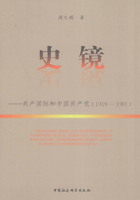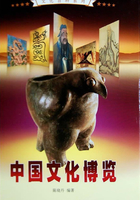THE FIRE-FESTIVALS hitherto described are all celebrated periodically at certain stated times of the year. But besides these regularly recurring celebrations the peasants in many parts of Europe have been wont from time immemorial to resort to a ritual of fire at irregular intervals in seasons of distress and calamity, above all when their cattle were attacked by epidemic disease. No account of the popular European fire-festivals would be complete without some notice of these remarkable rites, which have all the greater claim on our attention because they may perhaps be regarded as the source and origin of all the other fire-festivals; certainly they must date from a very remote antiquity. The general name by which they are known among the Teutonic peoples is need-fire. Sometimes the need-fire was known as wild fire, to distinguish it no doubt from the tame fire produced by more ordinary methods.
Among Slavonic peoples it is called living fire.
The history of the custom can be traced from the early Middle Ages, when it was denounced by the Church as a heathen superstition, down to the first half of the nineteenth century, when it was still occasionally practised in various parts of Germany, England, Scotland, and Ireland. Among Slavonic peoples it appears to have lingered even longer. The usual occasion for performing the rite was an outbreak of plague or cattle-disease, for which the need-fire was believed to be an infallible remedy. The animals which were subjected to it included cows, pigs, horses, and sometimes geese. As a necessary preliminary to the kindling of the need-fire all other fires and lights in the neighbourhood were extinguished, so that not so much as a spark remained alight; for so long as even a night-light burned in a house, it was imagined that the need-fire could not kindle. Sometimes it was deemed enough to put out all the fires in the village; but sometimes the extinction extended to neighbouring villages or to a whole parish. In some parts of the Highlands of Scotland the rule was that all householders who dwelt within the two nearest running streams should put out their lights and fires on the day appointed. Usually the need-fire was made in the open air, but in some parts of Serbia it was kindled in a dark room; sometimes the place was a cross-way or a hollow in a road. In the Highlands of Scotland the proper places for performing the rite seem to have been knolls or small islands in rivers.
The regular method of producing the need-fire was by the friction of two pieces of wood; it might not be struck by flint and steel. Very exceptionally among some South Slavs we read of a practice of kindling a need-fire by striking a piece of iron on an anvil. Where the wood to be employed is specified, it is generally said to be oak; but on the Lower Rhine the fire was kindled by the friction of oak-wood or fir-wood. In Slavonic countries we hear of poplar, pear, and cornel wood being used for the purpose. Often the material is simply described as two pieces of dry wood. Sometimes nine different kinds of wood were deemed necessary, but rather perhaps to be burned in the bonfire than to be rubbed together for the production of the need-fire.
The particular mode of kindling the need-fire varied in different districts; a very common one was this. Two poles were driven into the ground about a foot and a half from each other. Each pole had in the side facing the other a socket into which a smooth cross-piece or roller was fitted. The sockets were stuffed with linen, and the two ends of the roller were rammed tightly into the sockets. To make it more inflammable the roller was often coated with tar.












